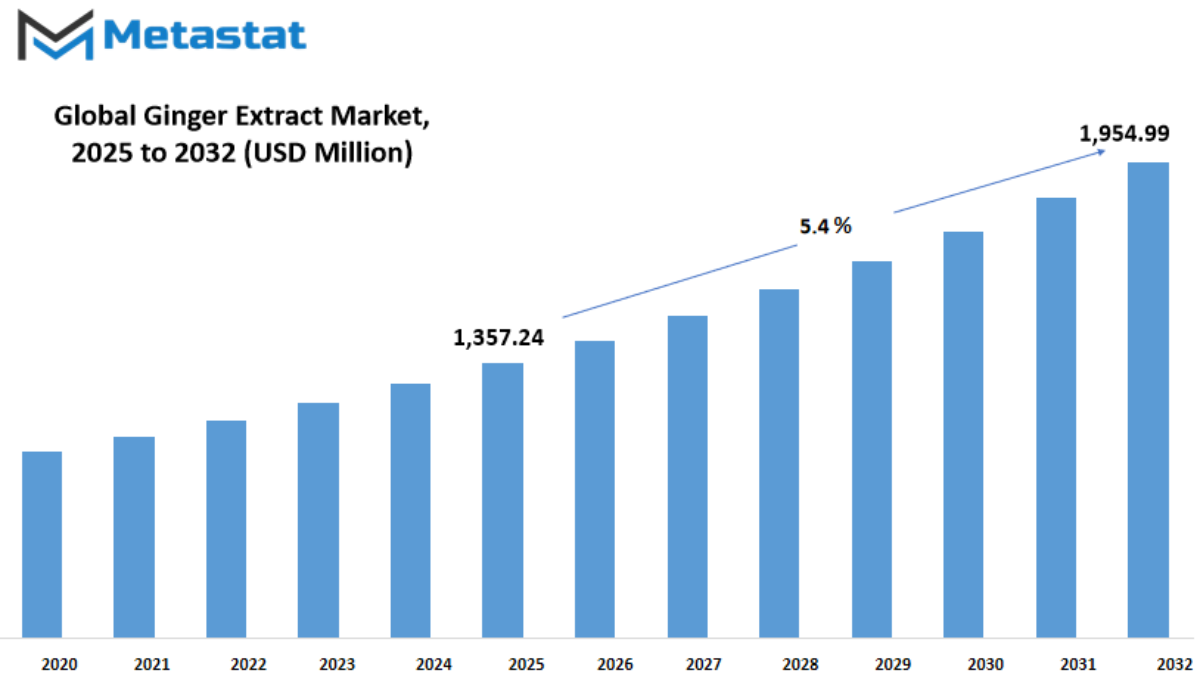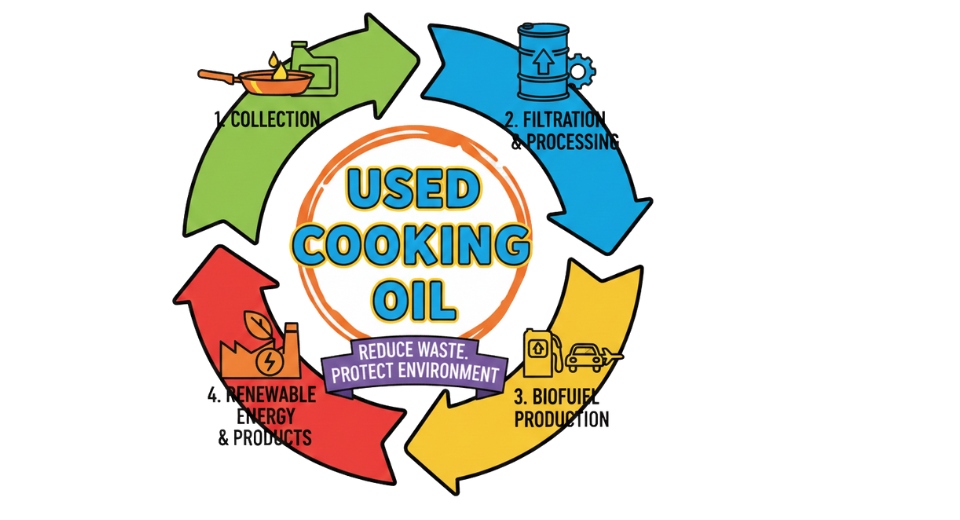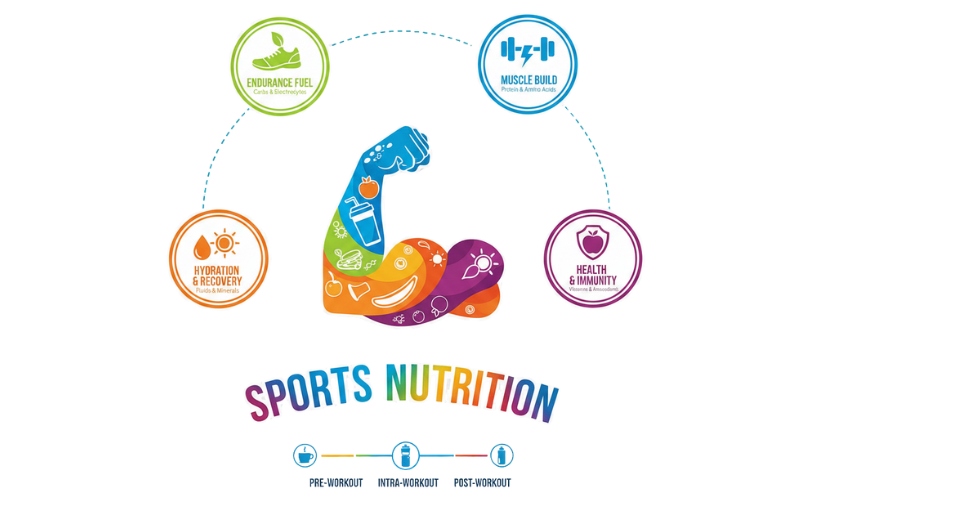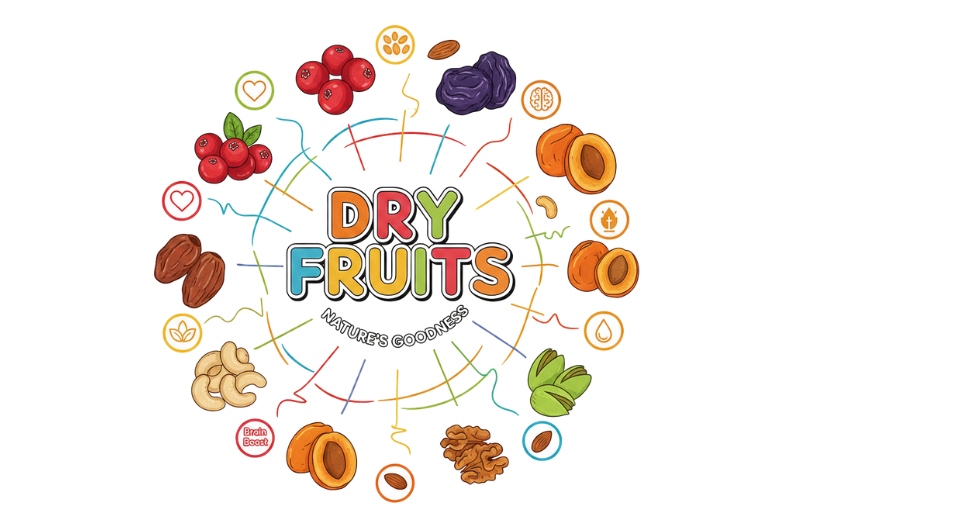MARKET OVERVIEW
The global ginger extract market is essentially a segment of the larger botanical ingredients business, dealing with the processing and distribution of concentrated ginger derivatives applied across food, beverage, personal care, and health product applications. The market covers the manufacturing and trading of liquid extracts, powders, oils, and oleoresins, each of which is derived through distinct extraction processes that maintain the unique bioactive contents of ginger, such as gingerol and shogaol. These ingredients will remain in the spotlight for their functional applications in products where natural options are the preference.
This market is influenced by an intricate web of processors, suppliers, and end-use markets with their individual quality standards and procurement methods. Most of the extraction facilities are based in areas where ginger is grown in volume, including India, China, and portions of Southeast Asia. These origins also largely determine the identity of the extract since soil, climate, and farming practices determine the phytochemical composition of the raw root. Global Ginger Extract stakeholders will ever more seek traceability and post-harvest handling as regulatory oversight of botanical ingredients tightens globally.
What differentiates this market from others within the natural extracts category is its direct overlap with both conventional medicine and contemporary wellness trends. Ginger has a long historical presence within herbal systems, but in this market, the extract needs to meet contemporary formulation requirements while maintaining its natural charm. The processing methods will further develop to complement cleaner extraction technologies, such as supercritical CO2 and water-based processing, which enable manufacturers to steer clear of chemical solvent usage. This facet will gain more focus as customers change expectations toward sustainability and transparency.
It would be naive to consider the global ginger extract market exclusively from the perspective of consumer packaged goods. The extract is also applied technically, like in flavor masking and digestive supplements in high-end supplements, which do not necessarily find their way into general visibility but are an integral part of commercial demand. Consequently, companies will seek means to standardize extract concentration and improve shelf stability without undermining the root's characteristic sensory and therapeutic attributes.
Where the simple uses end is an active realm of application development. Food and beverage formulators will play with ginger extract not only as a flavoring but as a structuring agent in functional beverages. In the cosmetics industry, its antioxidant profile will attract attention for skin-soothing and anti-pollution products. These applications will create new avenues, not by changing the extract's nature but by enabling it to perform functions that lie beneath taste or habit.
In the years ahead, the global ginger extract market will deal with both technical and ethical challenges. Those operating in it will have to ask themselves questions related to ethical sourcing, impact on biodiversity, and cultural appropriation, particularly as indigenous knowledge increases in commercial worth. There is more to understanding this market than product knowledge it needs the recognition of the multi-level value of a plant that, although based on ancient tradition, will be reinterpreted through contemporary expectations.
Global ginger extract market is estimated to reach $1,954.99 Million by 2032; growing at a CAGR of 5.4% from 2025 to 2032.

GROWTH FACTORS
The global ginger extract market is gradually gaining more attention as people grow more interested in what goes into their food and health products. More consumers now actively look for natural options that also serve a purpose beyond taste. Ginger extract, known for its strong flavor and potential health benefits, is becoming a preferred choice. Its rising demand in both food and health-related industries shows a shift in what people expect from the products they use daily. As time moves forward, this demand is expected to continue growing, largely driven by how widely ginger is being recognized for its support in digestive health and its anti-inflammatory properties. These benefits are not just talked about casually anymore they are becoming part of how products are promoted and chosen on store shelves.
People want food and supplements that do more than just fill them up. They want products that support their health in a simple and honest way. This is where ginger extract stands out. Brands are now putting more focus on clean-label and organic ingredients, and ginger extract fits that category well. The idea of “wellness” is not just a trend it is becoming a permanent part of how buyers make decisions. As this shift continues, ginger extract is expected to play a larger role in shaping new product formulas, especially in natural remedies, healthy drinks, and even beauty products. Its connection to both taste and health makes it a versatile choice for companies aiming to create better products.
However, there are some clear challenges that could slow the progress of the global ginger extract market. One is the short shelf life of natural extracts, which can make it harder for businesses to maintain quality over time. Another concern is how the price of ginger can change depending on the season and where it is grown. These factors make it harder to keep costs stable and predictable. Still, innovation in storage, processing, and farming techniques may help reduce these issues in the near future.
Looking ahead, there is strong potential for growth as more brands aim to offer products that are both natural and effective. The push for better ingredients and clear labeling creates room for ginger extract to thrive. As awareness continues to spread and consumer interest holds steady, the global ginger extract market is expected to expand and adapt to meet future needs.
MARKET SEGMENTATION
By Type
The global ginger extract market is expected to see significant growth in the coming years as consumer preferences continue to shift toward healthier and more natural products. Ginger extract, known for its wide range of health benefits such as aiding digestion, reducing inflammation, and boosting immunity, is increasingly being used in foods, beverages, personal care products, and even pharmaceuticals. As awareness of natural health solutions increases worldwide, demand for ginger extract is rising steadily across different sectors.
When looking at the market by type, it is divided into two main segments: Organic and Natural. Organic ginger extract is produced from ginger grown without the use of synthetic pesticides or fertilizers, making it a preferred choice for those who prioritize sustainability and clean-label products. As more people focus on avoiding chemical exposure in their diets, the demand for organic options is likely to rise. Meanwhile, natural ginger extract, while also derived from real ginger, may not always follow strict organic farming standards. Still, it provides many of the same benefits and is often more cost-effective for manufacturers and consumers alike.
The future of the global ginger extract market appears promising as industries aim to meet the growing expectations for transparency and clean sourcing. New technologies in farming, processing, and packaging are expected to improve both the quality and shelf life of ginger extract, making it even more appealing for large-scale use. In addition to health-conscious individuals, food and beverage companies are also starting to reformulate products to include natural flavoring and additives like ginger extract to satisfy new customer demands.
As markets in regions like Asia-Pacific, North America, and Europe expand, the need for reliable and consistent supply chains will become more important. Producers and distributors will likely invest in better agricultural practices and efficient processing systems to meet both volume and quality standards. There is also a growing opportunity in personalized wellness, where ginger extract may be included in supplements tailored to individual health needs. This trend could further support long-term growth as people seek customized solutions backed by natural ingredients.
Overall, the global ginger extract market is moving toward a future where clean ingredients are not just a trend but a basic expectation. The increasing popularity of both organic and natural ginger extract types reflects a shift in how people view their health and what they expect from the products they use every day.
By Forms
The global ginger extract market is expected to grow steadily in the coming years as demand for natural and plant-based products rises across various industries. Ginger extract, known for its health benefits, has found its place in food and beverages, personal care, pharmaceuticals, and even pet care. With growing awareness of healthier lifestyles, more people are shifting towards using natural supplements and ingredients, which will influence how the market develops in the future. Businesses are now paying close attention to consumer preferences, which are leaning toward clean-label and organic products. This shift will drive innovation in how ginger extract is processed and packaged to retain its natural qualities while meeting global safety standards.
When we look at how the global ginger extract market is structured by form, it is mainly divided into powder and liquid. Each form has its own uses and benefits. Powdered ginger extract is easier to store and transport, which makes it ideal for dry food items, supplements, and even teas. On the other hand, the liquid form is often used in beverages, syrups, and skincare products, where quick absorption and ease of mixing are needed. Both forms will continue to see growth, but the direction of that growth will depend on changing consumer habits and technological advancements in production methods. For example, new drying technologies could help preserve more nutrients in powder form, while cleaner extraction techniques could make liquid forms even more appealing.
Looking forward, as research continues to support the health benefits of ginger, its extract will be used in more targeted ways, like products designed for digestive health, pain relief, or immune support. This could lead to more personalized health solutions where the type and form of ginger extract used are tailored to specific needs. As a result, companies will invest in better sourcing, sustainable farming, and improved supply chains to keep up with demand while also protecting the environment. Countries that grow ginger, especially in Asia and Africa, could see increased export opportunities, leading to economic benefits for local farmers.
In summary, the future of the global ginger extract market looks promising, shaped by changing consumer needs, better production methods, and a global push for healthier and more natural products. Both powdered and liquid forms will continue to play an important role, and ongoing innovation will keep the market growing in new and exciting directions.
By End-Users
The global ginger extract market is expected to grow steadily in the coming years as more industries begin to explore its potential. Ginger extract, known for its natural healing and flavoring properties, is no longer limited to traditional uses. With growing awareness about health and wellness, it is being recognized across several sectors as a valuable ingredient. This interest will likely continue to rise as consumers and companies shift toward natural products.
In the food and beverage sector, ginger extract is becoming a popular choice due to its strong flavor and health benefits. Consumers are moving away from artificial additives, and ginger fits well into this shift. Companies are adding it to teas, juices, snacks, and even bakery items to meet the rising demand for products that offer both taste and nutrition. As people look for ways to stay healthy through their diet, the demand for natural ingredients like ginger extract will only increase.
The personal care industry is also beginning to rely more on ginger extract. Its anti-inflammatory and antioxidant qualities make it a useful ingredient in skincare and haircare products. Shampoos, lotions, and creams that include ginger extract are becoming more common as users look for gentle, plant-based solutions. This change will likely grow stronger in the future as more people choose personal care products that are safe, natural, and effective.
In the pharmaceuticals and nutraceuticals sector, ginger extract is being studied for its possible role in managing various health issues. From aiding digestion to reducing nausea and even helping with joint pain, it shows promise in a number of areas. Companies in this field are investing in more research to understand its full potential. The shift toward preventive healthcare and natural supplements will continue to push the use of ginger extract forward.
There are also other growing uses for ginger extract that don't fit neatly into the main categories. This includes pet care products, wellness centers, and even eco-friendly cleaning items. As the global market continues to search for safer and cleaner solutions, more unique applications for ginger extract will be discovered.
With ongoing innovation and consumer demand for healthier, natural products, the global ginger extract market will likely see solid expansion across different industries. As each sector explores new uses, the future of ginger extract looks promising, offering both versatility and value.
|
Forecast Period |
2025-2032 |
|
Market Size in 2025 |
$1,357.24 million |
|
Market Size by 2032 |
$1,954.99 Million |
|
Growth Rate from 2025 to 2032 |
5.4% |
|
Base Year |
2024 |
|
Regions Covered |
North America, Europe, Asia-Pacific Green, South America, Middle East & Africa |
REGIONAL ANALYSIS
The global ginger extract market is expected to grow steadily across different regions due to rising consumer awareness around health and wellness. As people become more interested in natural and plant-based solutions, ginger extract continues to gain popularity for its known benefits such as improving digestion and reducing inflammation. This growing interest is not limited to one part of the world. It spreads across North America, Europe, Asia-Pacific, South America, and the Middle East & Africa, each showing unique signs of future growth depending on local preferences, industries, and availability of raw materials.
North America, especially the U.S., has shown strong demand due to its large food, beverage, and health product sectors. Consumers in Canada and Mexico are also gradually shifting towards more natural ingredients in their daily diet and supplements. In the coming years, the market in this region will likely expand further as more companies introduce ginger-based products that meet the growing demand for clean-label items. The trend of wellness routines and functional food will continue to fuel growth across this region.
Europe has also embraced ginger extract, particularly in the UK, Germany, France, and Italy. These countries are already known for their strong stance on organic and natural food products. As regulations around synthetic ingredients become tighter, ginger extract is likely to become even more popular. This interest may also spread into lesser-explored areas of Europe, opening up new opportunities. Producers in Europe are expected to explore advanced farming techniques and sustainable extraction methods, making the region more competitive.
In the Asia-Pacific region, where ginger has deep cultural and traditional roots, the market will keep expanding, especially in countries like India, China, Japan, and South Korea. These nations already use ginger extensively in both food and medicine, but modern consumer goods are offering new ways to introduce ginger extract to younger generations. With a rise in disposable income and a growing middle class, the demand for natural health-enhancing products is rising rapidly.
South America, led by Brazil and Argentina, is slowly gaining ground. As local industries focus more on exports and improved processing technologies, this region will become a significant contributor. Meanwhile, the Middle East & Africa, especially countries like Egypt and South Africa, is showing early signs of adoption. Rising health concerns and an expanding urban population will push more people in these regions toward products that contain ginger extract. Each region adds a layer of potential, making the future of the global ginger extract market one to watch closely.

COMPETITIVE PLAYERS
The global ginger extract market is expected to grow steadily in the years to come, driven by rising consumer awareness around health and wellness. People are looking for more natural ways to support their bodies, and ginger, with its well-known anti-inflammatory and antioxidant benefits, continues to gain attention. This interest is not limited to traditional uses but is now spreading across different product categories, including dietary supplements, personal care items, and even beverages and food products. The growing demand from health-conscious consumers will likely push more companies to invest in this area, both in terms of research and product development.
Major players in the global ginger extract market are expected to play a crucial role in shaping its future. Companies such as Naturex SA, Nutra Green Biotechnology Co. Ltd, and Arjuna Natural Extracts Ltd. are focusing on innovation and quality. Their strategies often involve improving extraction methods to retain more of ginger’s natural properties while meeting global quality standards. As customer expectations grow, these companies are also prioritizing traceability, organic certifications, and sustainability in their operations. It’s likely that firms which succeed in combining product effectiveness with ethical sourcing and transparency will lead the market.
Other important names like Naturalin Bio-Resources Co. Ltd, Hornsea Sunshine Biotech, and Organic Herb Inc. are also expected to contribute significantly. These companies are investing in research to expand the use of ginger extract into new areas. For instance, there's growing interest in its application in skincare, as people become more interested in plant-based ingredients that are gentle yet effective. Applied Food Sciences Inc. and Botanica are also making efforts to explore different delivery methods, such as gummies and liquid extracts, which make it easier for consumers to include ginger extract in their daily routine.
Looking ahead, competition in the global ginger extract market will likely push companies to not just offer good products but to build stronger connections with consumers. Marketing efforts will probably shift toward storytelling, showing how ginger is sourced and processed, and explaining the benefits clearly. This level of connection could set certain brands apart in a crowded space. In the future, more collaborations between biotechnology firms and wellness brands could also take place, speeding up innovation. As awareness grows and preferences shift, companies that remain flexible and responsive will likely lead the way in this growing and changing market.
Ginger Extract Market Key Segments:
By Type
- Organic
- Natural
By Forms
- Powder
- Liquid
By End-Users
- Food & Beverages
- Personal Care
- Pharmaceuticals & Nutraceuticals
- Others
Key Global Ginger Extract Industry Players
- Naturex SA
- Nutra Green Biotechnology Co. Ltd
- Naturalin Bio-Resources Co. Ltd
- Hornsea Sunshine Biotech
- Greenutra Resource Inc.
- Arjuna Natural Extracts Ltd.
- Naturex (Givaudan)
- Organic Herb Inc.
- Botanica
- Applied Food Sciences Inc.
WHAT REPORT PROVIDES
- Full in-depth analysis of the parent Industry
- Important changes in market and its dynamics
- Segmentation details of the market
- Former, on-going, and projected market analysis in terms of volume and value
- Assessment of niche industry developments
- Market share analysis
- Key strategies of major players
- Emerging segments and regional growth potential








 US: +1 3023308252
US: +1 3023308252






